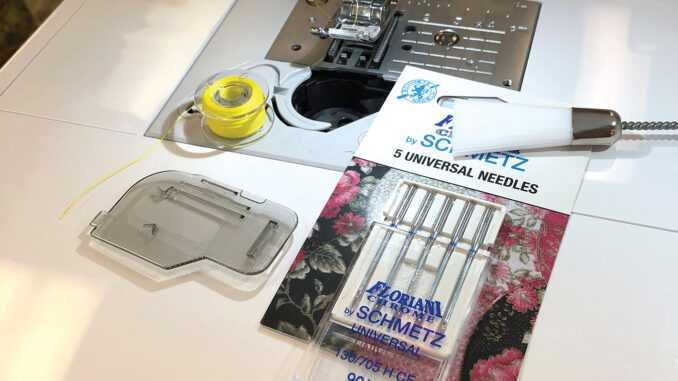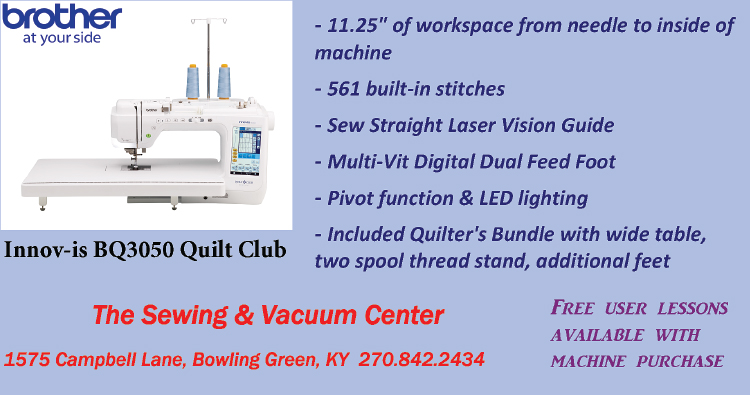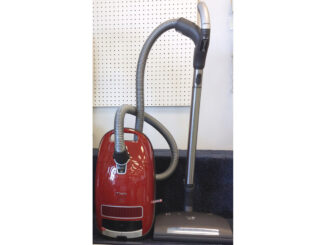
2023 brings us a new year with lots of possibilities. I’ve created some goals/resolutions for the coming year that you may want to use as well to make this year’s stitching life a good one!

- Keep the sewing machine in good working order: I plan to begin the year with a clean machine! After every six hours or so of sewing, I use a soft brush to remove lint from the bobbin case area. I also “dust” the machine itself regularly as needed. Since I sew almost daily, my machine will visit the technician at least once, if not twice a year for a full service. The technician will clean and lubricate areas of the machine that I cannot access. Most new machines today have “sealed systems” that require a technician to access for oiling. Check your owner’s manual to see what part of the machine you can oil.
- Check machine needles: I always change my needle after 10+ hours or so of sewing. If I begin to see skipped stitches or have thread breaking, the first thing I will do is change the needle. I’ll also make sure that I have a variety of machine needles for different fabrics/projects. A size 12 or 14 is considered a standard size, so be sure to have several of those on hand. If you are a machine embroiderer, you will need a supply of machine embroidery needles as well.
- Review machine bobbins: I am going through my bobbin stash and making sure that the bobbins I have are the correct ones for my machines. There isn’t a “one-size-fits-all” bobbin. Singer Featherweight machines take a particular type of metal bobbin. Some of the new machines only use plastic bobbins. A wrong size bobbin will cause stitch problems. I’ll have a box/bag for each type of bobbin that I use and will store with the correct machine.
- Maintain good sewing tools. It’s time to check my scissors, snips, rotary cutter and blades. I will sharpen any shears/scissors that need it. As for my rotary cutter, I’ll discard any rotary blades that have become dull. This is a good time to take the rotary cutter apart and clean it as well. My rulers that are used with the cutter will be checked – are any “nicked” from the rotary blade? I may need to replace or file down rough spots on the ruler.
- Organize threads. Good thread is essential to sewing success. I’ll organize threads by type to make it easier to find what I need. (Example, all-cotton for quilting, cotton-poly for garments, mending, embroidery thread for designs, etc.) If you have threads from your grandmother, great-aunt, etc., it’s time to bid them goodbye OR put them in clear glass containers and use to decorate the sewing area. Old threads are generally coarser than our current threads and do not work well in newer machines. It’s best to store threads where sunlight and dust don’t accumulate on them as this combination can shorten thread life.
- Check power strip and/or battery backup. Many machines today have some type of electronic and/or computer board in them. I’ll make sure that my machine(s) are connected to a strip that will provide adequate protection from power surges. I’ll also check the age of the power strip/surge protector to see if it needs replacing (10 years is the suggested lifespan of these). If you have a computerized embroidery machine with design software, make sure that both the machine and computer are protected. A battery back-up protector may be something to look at for this equipment.
- Review UFOs (Un-Finished Projects) and the stash. Like most stitchers, this is a problem for me! I will review my in-progress projects and determine IF I truly plan to finish them. For those I have given up on, I’ll pass along to a friend who does scrap donation quilts. Same goes for my stash – I’ll review and pass on fabrics that I am no longer interested in. I will also organize the stash according to cut and color so it’s easier to find what I am looking for!
Here’s hoping that 2023 will be a great stitching year for all of us!
-submitted by The Sewing & Vacuum Center



